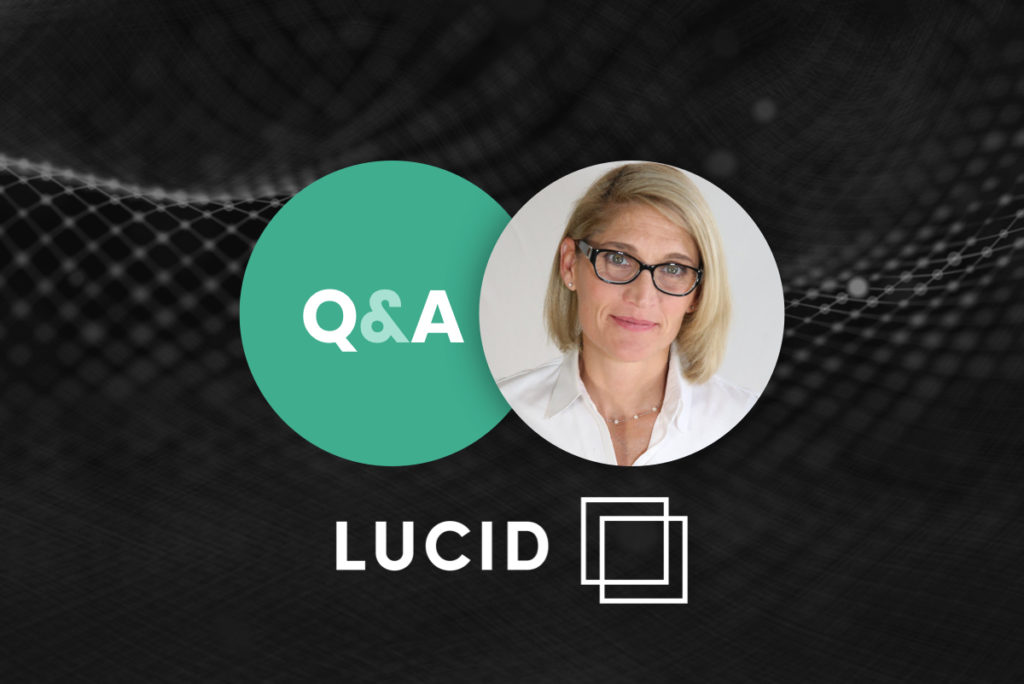In our latest installment in the CXO Series, we sat down with Stephanie Comardelle, Vice President of Customer Experience, Success, and Solutions at Lucid to discuss what it takes to implement a stakeholder engagement plan at a time when there is so much going on as well as how they are managing their new customer success program.
Lucid bridges the gap between global questions and human answers by connecting buyers and sellers in one central location for survey sample groups. As part of the roll-out of their new customer success program, Lucid wanted to focus on how to manage and engage their key stakeholders. However, an important aspect of any new customer success program is managing your internal stakeholders.
Aligning Internal Stakeholders with New Customer Success Program
Audience: When it comes to relaying feedback to internal stakeholders, what tools do you use to collect customer feedback, share it internally, and present it in a clear way?
Stephanie Comardelle: This is really where Voice of the Customer comes to play. Our Customer Success Managers, they’re doing their health check-ins, collecting feedback on what’s working and what’s not and this is part of our product improvement process. As part of that we:
- Collect & document feedback
- Identify feedback provider and organization
- Map stakeholder type
We meet weekly on Fridays with our product and development leadership teams to walk through the stakeholder and customer feedback that we’ve collected for that week in Totango. We also collect customer sentiment throughout our engagement methods such as satisfaction scores.
A: What was it like trying to get your internal teams onboard with Customer Success and drive impact?
SC: We created internal champions and we brought them along on our journey. They helped review our requirements, what our day to day life in Totango would look like, and how do we improve it, etc. So from the beginning, we started by creating champions around Totango.
We really took the perspective that no one ever just wants to use a new toolset. It takes time. It’s an investment. You have to learn it. But what we wanted to do was really highlight the impact. And I will say we have very high adoption, especially amongst our CSMs. But that began once our CSMs became champions and they got excited. Which then got our account teams, sales team, product teams, and support teams all excited and asking how to leverage Totango. This enabled our CS team to understand, “Hey, I have a voice. I’m impacting how I work. And this, this provides me a great mechanism.”
The last thing I’ll say is, we also assured our Customer Success team that Totango is where they will work. It’s where they start their day, it’s where they facilitate their day and it’s where they end their day. We enabled integrations to all of the other systems so that it’s seamless and others can have the information they need. For a CSM, they don’t have to go to multiple places. We really streamlined it, which really had the largest impact because now they could go in and manage their day to day easily.
A: Now that you have a 360 view of your customers for your Customer Success team, how do you ensure your Sales team is also plugged into what’s happening during the post-purchase experience?
SC: First and foremost, I think one of the best ways to describe it is we really don’t view sales and post-sales. We have really looked at it as we keep our customer central to everything. And so we created our team structures between sales and literally around the customer lifecycle to where our customers have a big group hug.
The 360 really becomes paramount. When our CSMs wake up and they start their day, they have their dashboards, they can see in their portfolio of accounts which accounts are doing really well, which ones might need some attention, and which ones are absolutely going to require action that day. They can also just see where are we with our planned engagement. Having service levels in accordance with your customers and knowing, for example, it’s time for our monthly health check with customer x today. It helps them to really facilitate their day.
At the end of the day, it assures that not only do they have a line of sight to what they accomplished, where they might need to ask for help and where to take action. It just really keeps them organized and it keeps them on point.
A: Does your sales team have access to your Customer Success solution or do they get some sort of specific view? How does it all work?
SC: So for us, our sales team primarily works in Salesforce and we use Zoe, and it’s fantastic. It’s amazing and enables that two-way data exchange.
One of the reasons that getting the group hug and really breaking down the barriers of sales and post-sales was so important to our success is we do have a very structured approach to Account Management. We have Account Managers that are accountable for the cross-sells, upsells, and renewals with our customers. Customer Success is very focused on expansion through organic, meaning adoption, increasing usage, and identifying those opportunities. But they have to be working very closely together.
We have started looking at how we do account planning in Totango as part of our global key account space. We’ve had tremendous success so far. The engagement level with sales has been very high. They have transparency now with the 360-view and have seen a lot of benefits. They have actually asked to continue to use it.
If you are interested in joining our CXO Series events, sign up here to learn more. Looking to try out a Customer Success solution that allows you to manage stakeholder engagement, share valuable insights with your team, and drive business outcomes? Get started with Totango for free!

